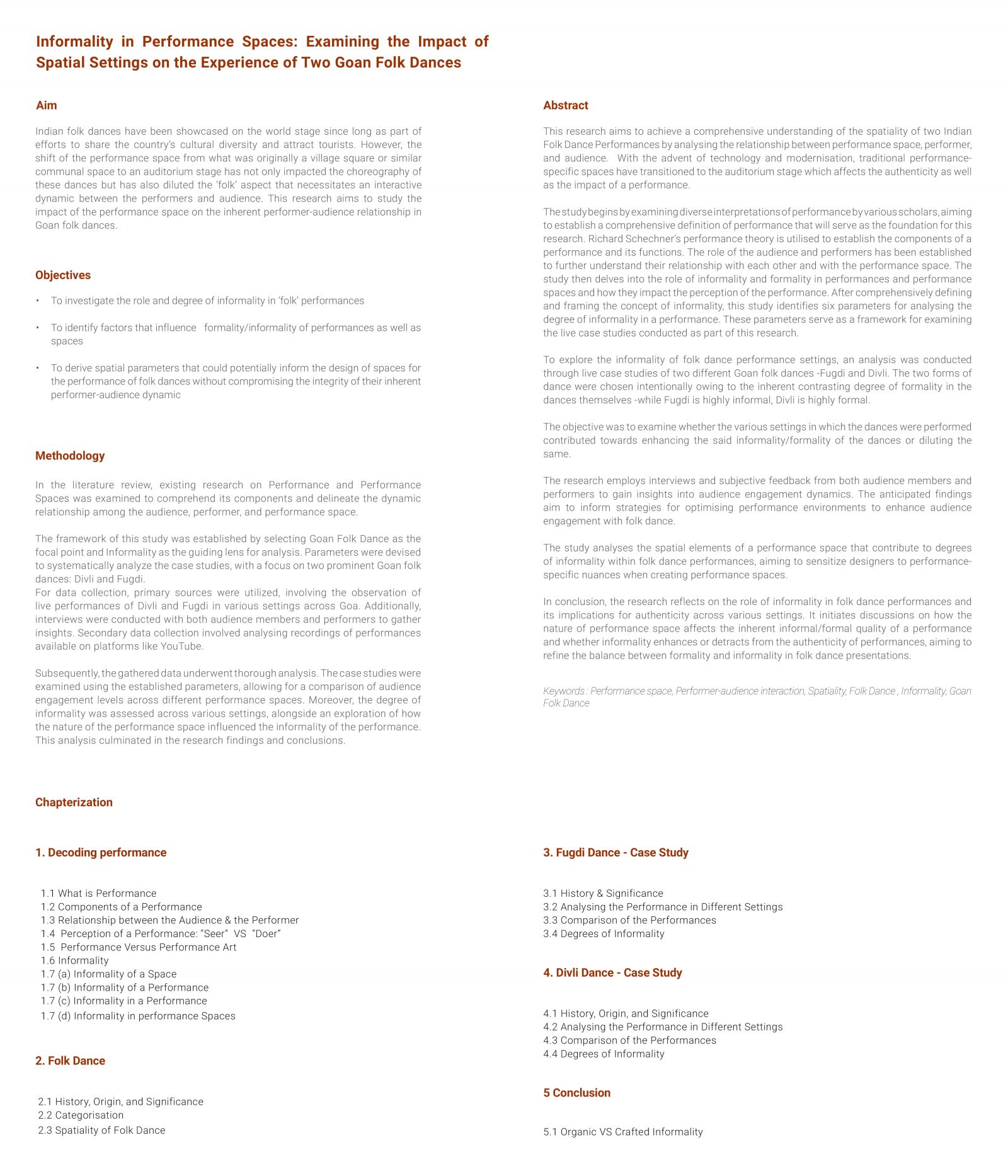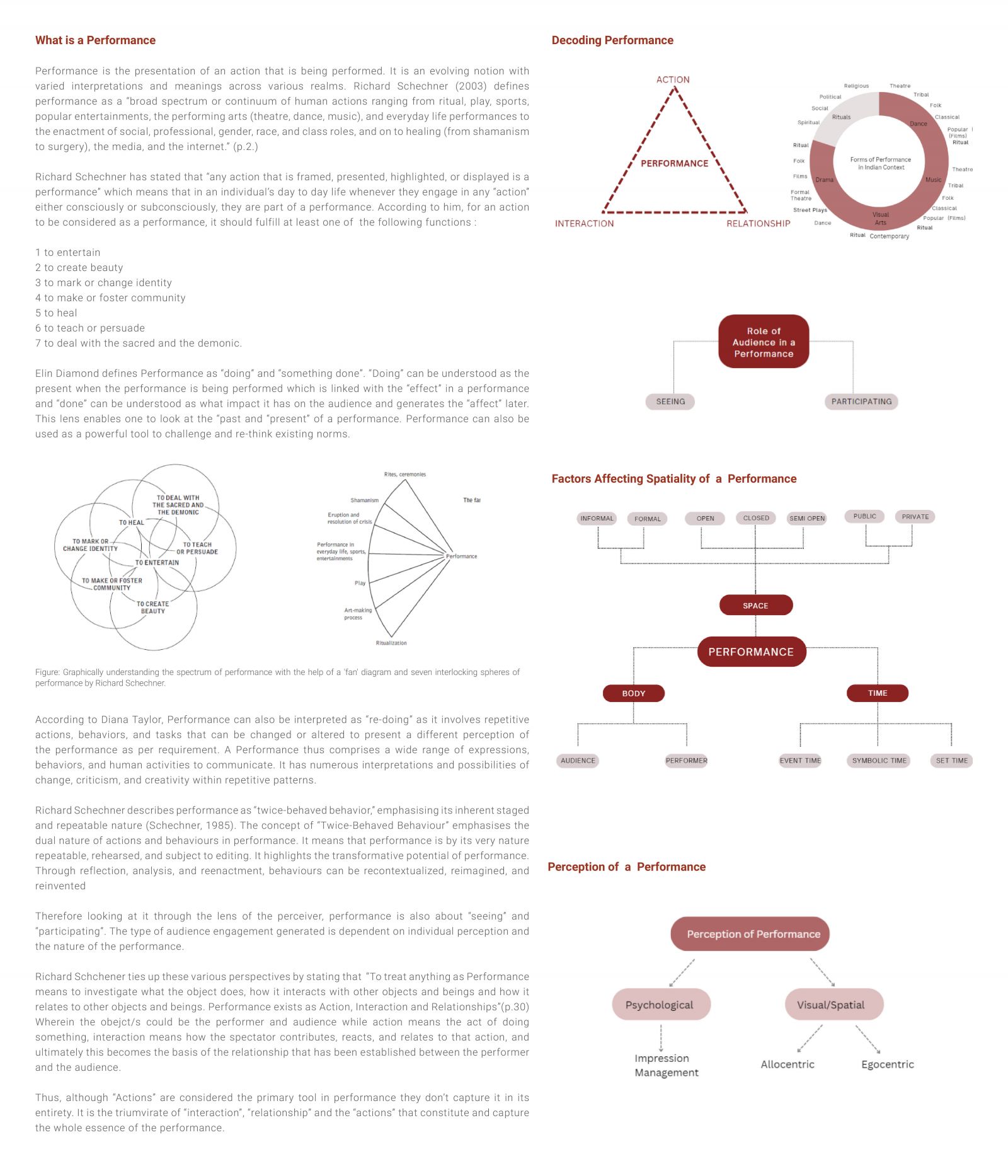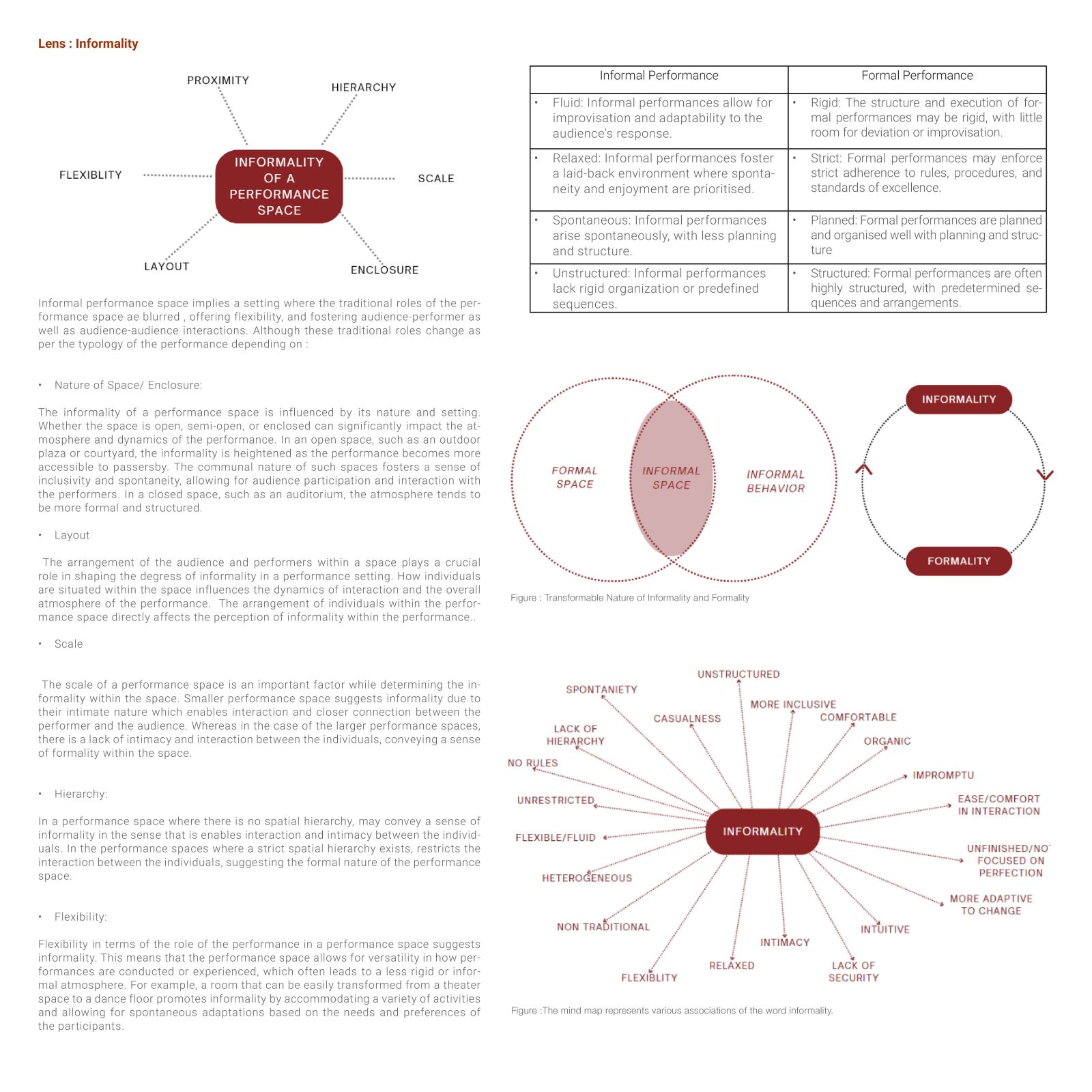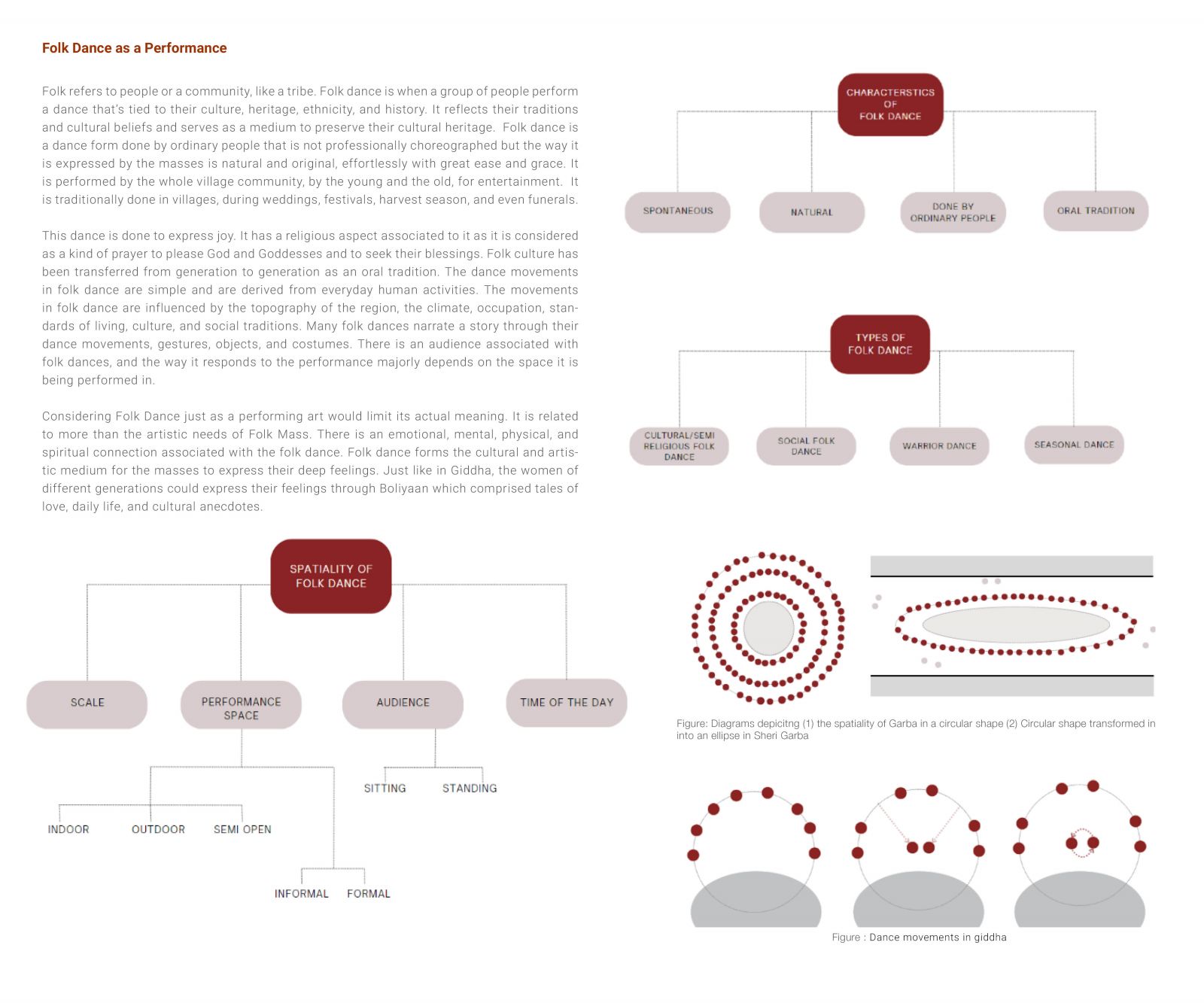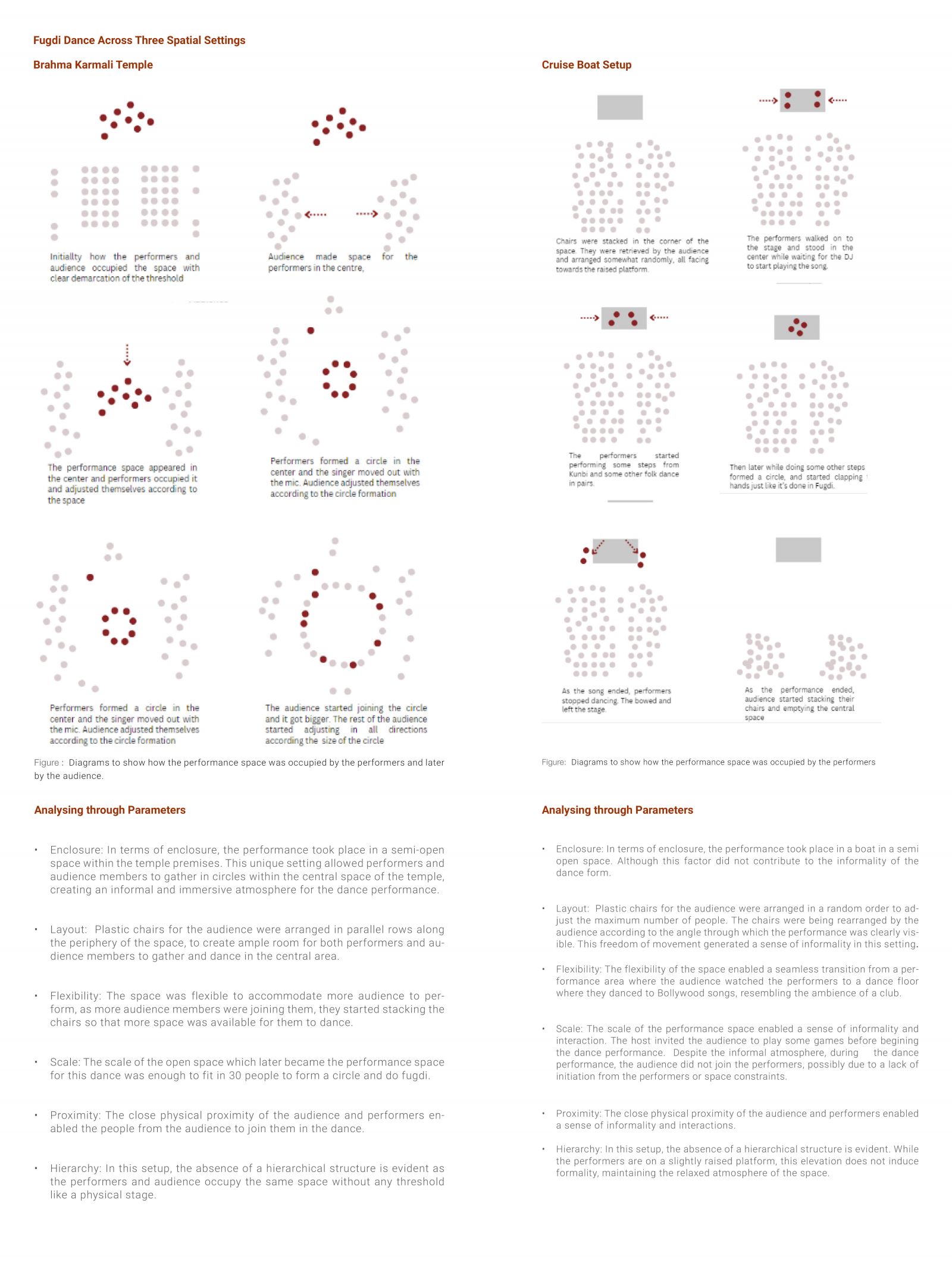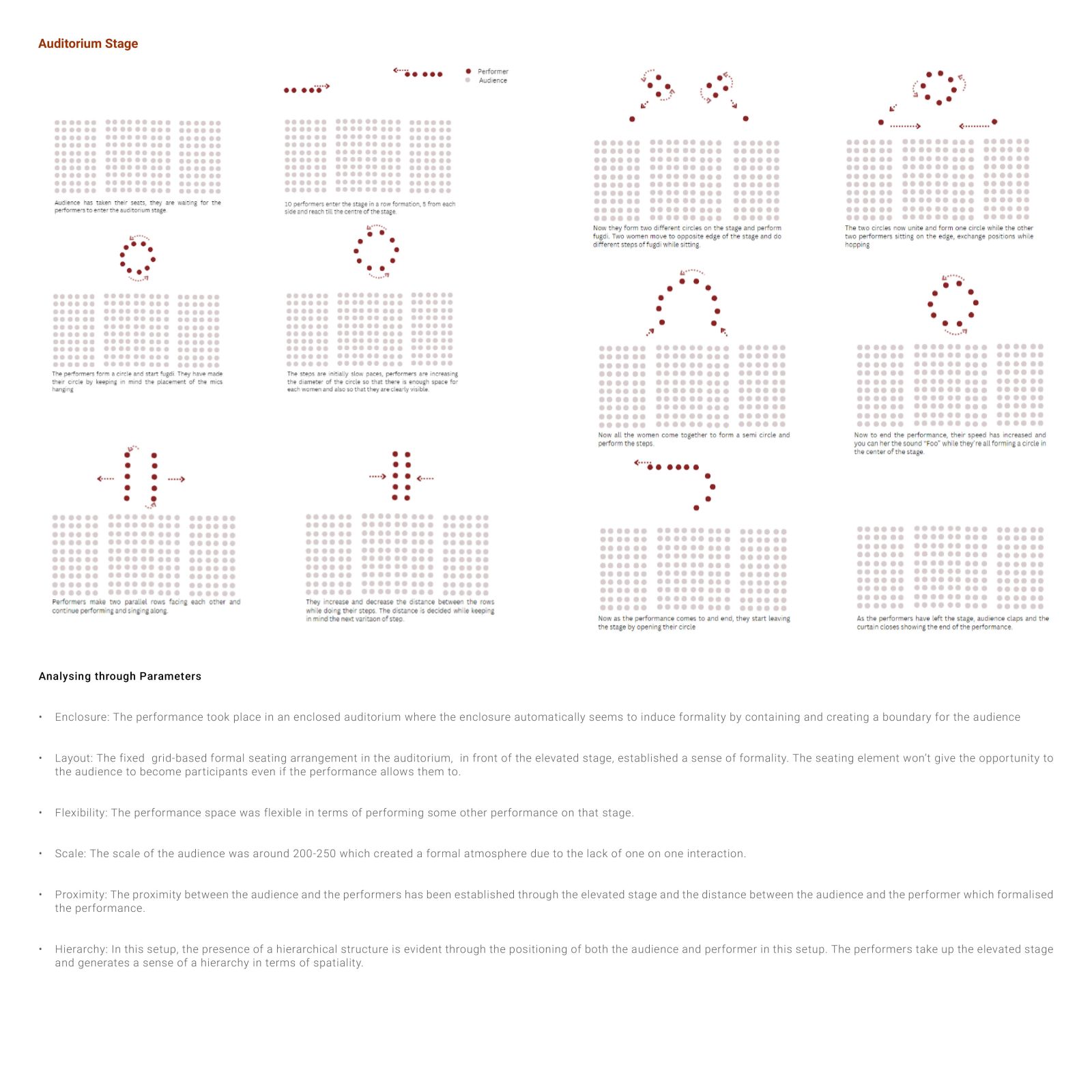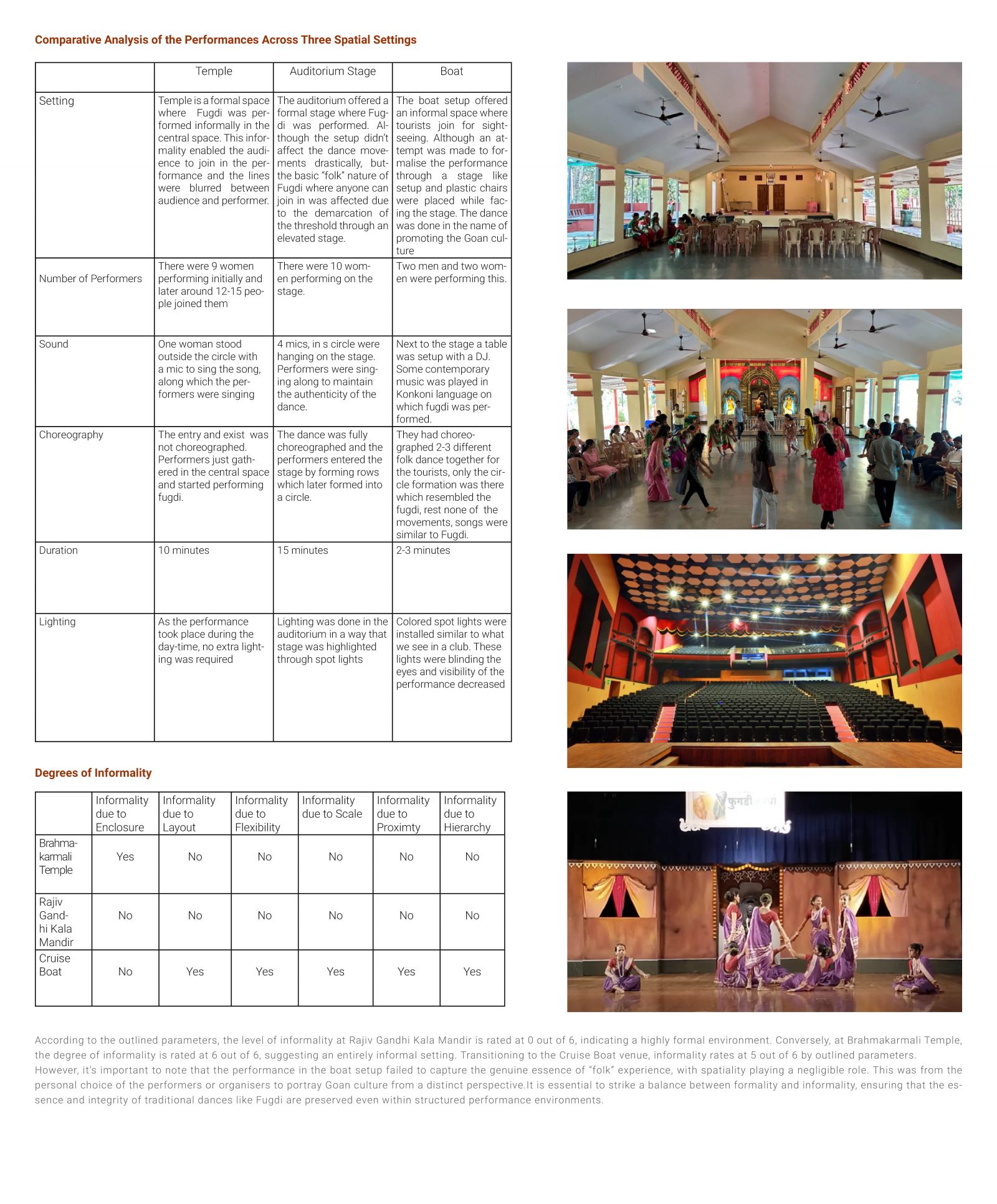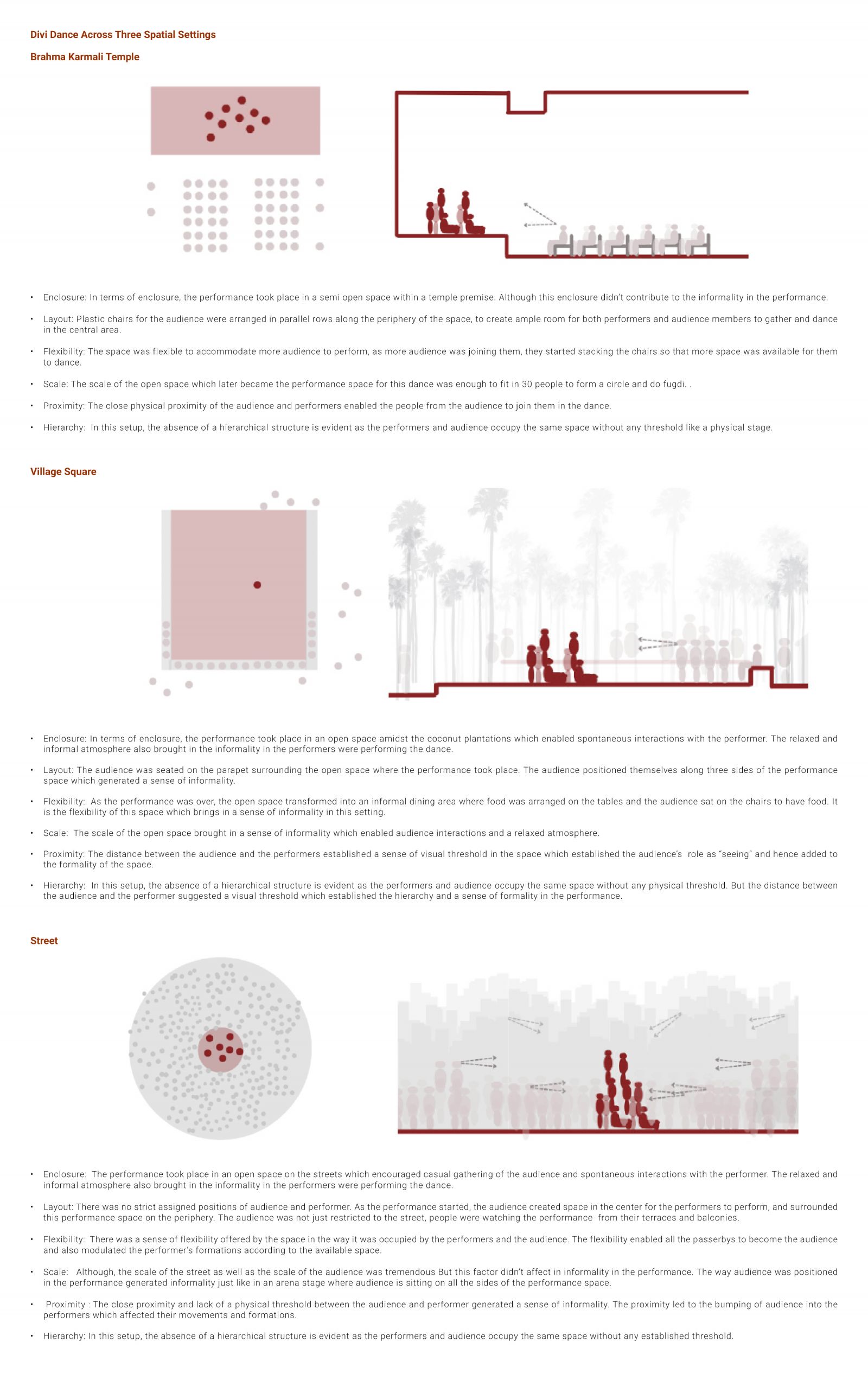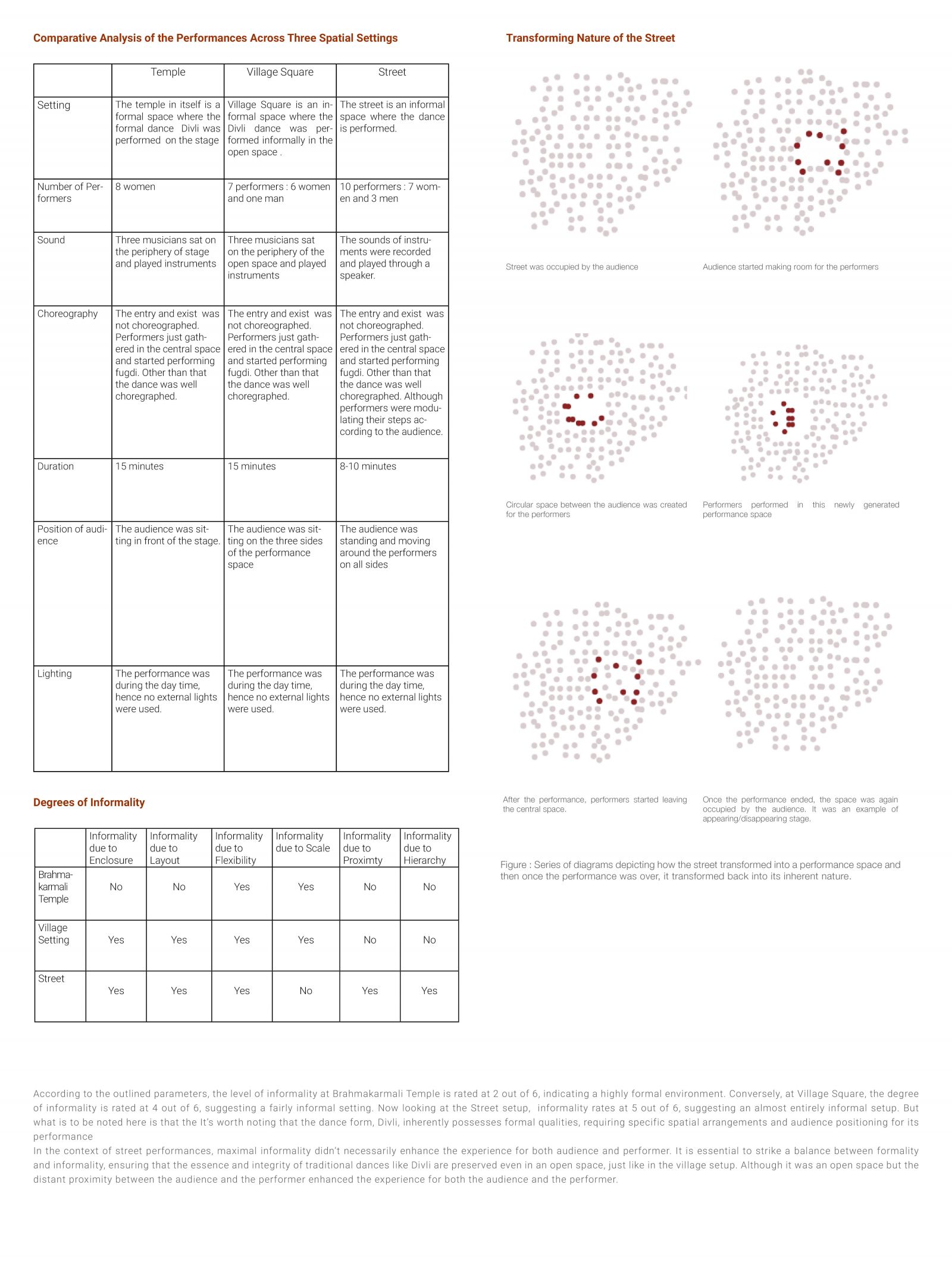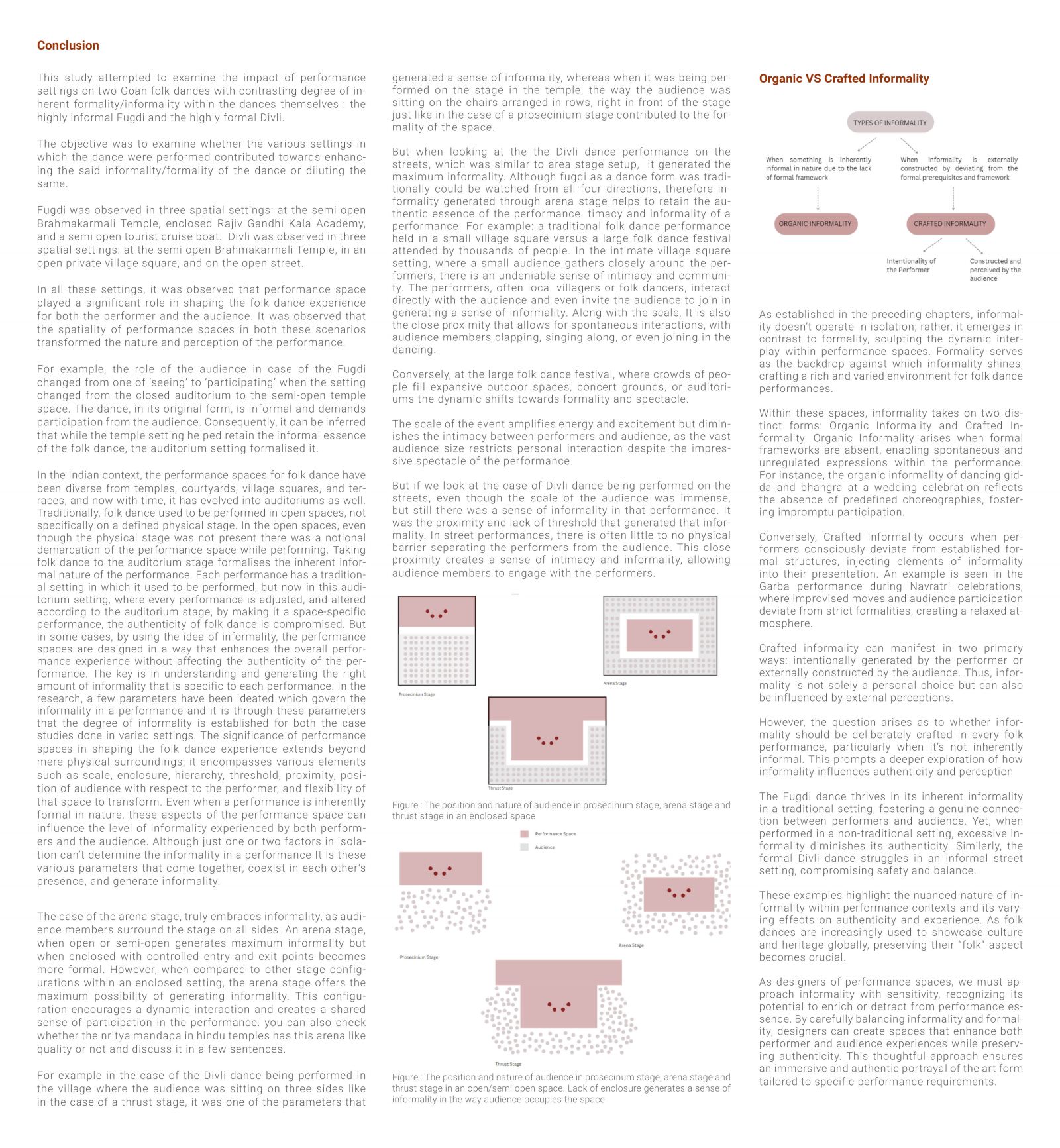Your browser is out-of-date!
For a richer surfing experience on our website, please update your browser. Update my browser now!
For a richer surfing experience on our website, please update your browser. Update my browser now!
This research aims to achieve a comprehensive understanding of the spatiality of two Indian Folk Dance Performances by analysing the relationship between performance space, performer, and audience. With the advent of technology and modernisation, traditional performance-specific spaces have transitioned to the auditorium stage which affects the authenticity as well as the impact of a performance. The study begins by examining diverse interpretations of performance by various scholars, aiming to establish a comprehensive definition of performance that will serve as the foundation for this research. Richard Schechner’s performance theory is utilised to establish the components of a performance and its functions. The role of the audience and performers has been established to further understand their relationship with each other and with the performance space. The study then delves into the role of informality and formality in performances and performance spaces and how they impact the perception of the performance. After comprehensively defining and framing the concept of informality, this study identifies six parameters for analysing the degree of informality in a performance. These parameters serve as a framework for examining the live case studies conducted as part of this research. To explore the informality of folk dance performance settings, an analysis was conducted through live case studies of two different Goan folk dances -Fugdi and Divli. The two forms of dance were chosen intentionally owing to the inherent contrasting degree of formality in the dances themselves -while Fugdi is highly informal, Divli is highly formal. The objective was to examine whether the various settings in which the dances were performed contributed towards enhancing the said informality/formality of the dances or diluting the same. The research employs interviews and subjective feedback from both audience members and performers to gain insights into audience engagement dynamics. The anticipated findings aim to inform strategies for optimising performance environments to enhance audience engagement with folk dance. The study analyses the spatial elements of a performance space that contribute to degrees of informality within folk dance performances, aiming to sensitize designers to performance-specific nuances when creating performance spaces. In conclusion, the research reflects on the role of informality in folk dance performances and its implications for authenticity across various settings. It initiates discussions on how the nature of performance space affects the inherent informal/formal quality of a performance and whether informality enhances or detracts from the authenticity of performances, aiming to refine the balance between formality and informality in folk dance presentations.
